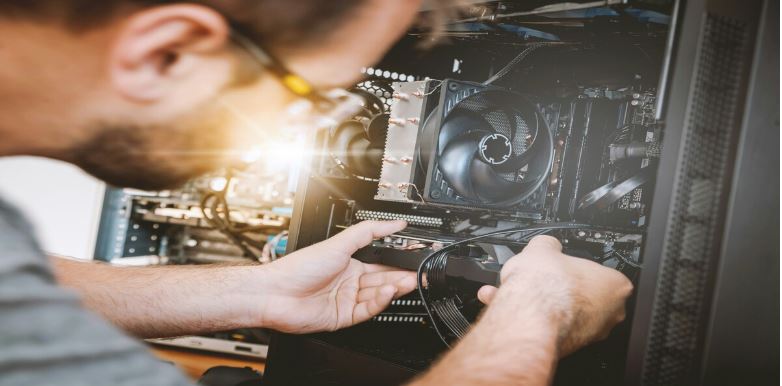Sports injuries can happen to anyone—whether you’re a seasoned athlete or just starting a fitness journey. Among the most common injuries are sprains and strains, which affect muscles, tendons, and ligaments. Although some of these injuries can be treated with basic first aid, there are cases where seeking urgent care is essential to avoid long-term complications. In this article, we explore the nature of sprains and strains, their symptoms, and why prompt medical attention from an urgent treatment center is crucial for recovery.
What are Sprains and Strains?
Sprains and strains are often used interchangeably, but they affect different parts of the body. Here’s a breakdown of the two injuries:
- Sprains: These occur when ligaments—strong bands of tissue that connect bones—are overstretched or torn. A sprain typically happens when a joint is twisted beyond its normal range of motion. Ankle sprains, knee sprains, and wrist sprains are common examples.
- Strains: A strain happens when muscles or tendons (the tissues that connect muscles to bones) are stretched too far or torn. This often results from overuse or improper movements during physical activity. Strains are common in the hamstrings, lower back, and shoulder muscles.
While sprains and strains can vary in severity, both require timely attention to ensure the injury heals properly and to avoid further damage.
Key Symptoms to Look Out For
Knowing how to recognize sprains and strains will help you determine whether you need urgent medical care. Some symptoms of these injuries overlap, but each injury also has its own distinct signs.
- Symptoms of a Sprain:
- Pain around the affected joint (can range from mild to intense).
- Swelling and bruising in the injured area.
- Inability to move the joint normally or bear weight on it.
- Popping or tearing sensation at the moment of injury.
- Joint instability in severe cases.
- Symptoms of a Strain:
- Sharp, sudden pain in the affected muscle or tendon.
- Weakness in the muscle or difficulty moving it.
- Swelling or bruising at the site of injury.
- Muscle spasms or tightness.
- Tearing sensation in the muscle during the injury.
By recognizing these symptoms, you can better assess the severity of the injury and take appropriate action.

When to Seek Immediate Care for Sprains and Strains
Though some sprains and strains can be treated at home, certain circumstances call for medical intervention to prevent complications. It’s essential to know when to visit an urgent treatment center or emergency room for these injuries.
1. Extreme Pain or Difficulty Moving the Injured Area
If you experience severe pain after a sprain or strain or find it difficult to move the injured body part, it’s time to seek medical care. Intense pain could indicate a more severe injury, such as a torn ligament or tendon. Moreover, if you’re unable to bear weight or use the injured limb, this might point to a serious injury that requires immediate attention.
2. Visible Deformity or Joint Instability
One of the most serious signs of a sprain or strain is when the affected joint appears deformed or if the joint feels unstable. This could indicate a dislocation or a complete ligament rupture, which requires urgent medical care to prevent further damage and ensure proper realignment.
3. Swelling and Bruising That Worsen
While some swelling and bruising are common after a sprain or strain, if the swelling increases dramatically or doesn’t improve over time, you should seek medical help. Severe swelling could mean that the injury is more severe than initially thought. Excessive bruising or rapid spread of bruising could signal internal bleeding or damage to blood vessels, both of which require immediate care.
4. Loss of Sensation or Blood Flow Issues
If the injured area feels numb, or if you notice cold, pale, or bluish skin, it could indicate nerve damage or circulation issues. These symptoms suggest that immediate medical attention is required to prevent serious complications, such as long-term nerve damage or tissue death.
5. Persistent Symptoms Despite Rest and Home Care
If you’ve followed the basic R.I.C.E. method (Rest, Ice, Compression, Elevation) and the injury hasn’t improved after a few days, it’s time to get it checked. Persistent pain, swelling, or immobility can indicate a more severe injury that requires professional medical intervention, such as physical therapy or, in some cases, surgery.
6. Injury from High-Impact or Contact Sports
Injuries sustained during high-contact sports (e.g., football, rugby, basketball) or high-impact activities should always be taken seriously. These types of injuries often involve greater forces, which can lead to more significant damage to muscles, tendons, or ligaments. Any severe pain, instability, or deformity following an intense activity should be evaluated as soon as possible.
How an Urgent Treatment Center Can Help
Urgent treatment centers are designed to provide quick, effective care for injuries like sprains and strains. When you visit one, medical professionals will typically perform the following:
- Assessment: A thorough examination of the injury, including questions about how it occurred and an evaluation of symptoms.
- Imaging Tests: If necessary, X-rays or MRIs may be used to assess the extent of ligament or tendon damage and rule out fractures.
- Immobilization: Depending on the severity of the injury, the injured area may be splinted, braced, or wrapped to limit movement and promote healing.
- Pain Management: Pain relief can be provided through medications and cold therapy to reduce swelling and discomfort.
- Referral to Specialists: In cases of severe damage, you may be referred to an orthopedic specialist or a physical therapist for further treatment.
Aftercare and Rehabilitation
After initial treatment at an urgent care center, sprains and strains often require a period of rehabilitation to ensure full recovery. This typically includes:
- Physical therapy: A physical therapist will guide you through exercises to restore mobility, strength, and flexibility in the affected area.
- Rest: Allowing the injured muscle or joint to heal properly without overuse is essential for preventing reinjury.
- Gradual Return to Activity: Once cleared by your healthcare provider, you can gradually resume your normal activities, taking care to avoid putting too much stress on the injured area too soon.
Preventing Sprains and Strains in the Future
While you can’t eliminate the risk of injury entirely, there are strategies you can use to prevent sprains and strains in the future:
- Warm-up and Stretch: Before engaging in physical activity, ensure you perform proper warm-up exercises and stretching to prepare your muscles and joints for the demands of the activity.
- Strength Training: Regular strength and conditioning exercises can enhance your muscle strength and joint stability, reducing the risk of injury.
- Proper Technique: Always use the correct form when performing exercises or playing sports to avoid unnecessary strain on muscles and joints.
- Wear Appropriate Gear: Depending on the sport or activity, ensure you’re using protective gear, such as braces, wraps, or supportive footwear, to reduce the risk of injury.
Final Thoughts
Sprains and strains are common injuries that occur during physical activities, but when treated properly, they can heal efficiently without long-term consequences. While minor injuries can often be managed at home, more severe sprains and strains require timely medical intervention. If you experience severe pain, significant swelling, joint instability, or difficulty moving the affected body part, it’s important to seek help at an urgent care center as soon as possible. Proper treatment not only promotes faster recovery but also helps prevent further damage to the affected area, allowing you to return to your activities with confidence.




